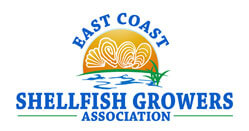Vibrio FAQs
Executive Director Bob Rheault answers some questions
Does Global Warming Cause Vibrio Outbreaks?
Every reporter these days seems intent on drawing a link between global warming and Vibrio outbreaks. Although it makes for an attractive narrative, I don’t think the theory really holds up. Over the past 50 years we have seen average temperatures increase around 1°F. There are places where the increase has been more or less, but on average this is what NOAA data have shown globally. While Vibrio populations are correlated with temperatures, based on what we know one degree is not likely to cause a statistically significant increase in either Vibrio populations or number of outbreaks.
The dramatic increase in outbreaks seen in New England in 2013 and 2014 was not associated with unusually hot summers, but rather was related to the introduction of a new strain of Vibrio parahaemolyticus: serotype O4:K12. (Serotypes are variations within a species of bacteria or virus based on cell surface antigens.)
What is the deal on the new O4:K12 strain?
Almost all the outbreaks since 2013 that have been serotyped appear to be related to this new strain of Vibrio parahaemolyticus (Vp). This strain has plagued West Coast harvesters for years, but only recently appeared in New England. By all accounts it is far more virulent than anything we have had to deal with before. Prior to the introduction of O4:K12, most New England states had only experienced sporadic Vp illnesses, and harvesters were holding shellfish on deck for 10-14 hours prior to refrigeration with no ill effects.
How did the shellfish industry respond?
I’m proud of how the industry rose to the challenge of dealing with this new strain. When the first wave of illnesses hit in 2013, many harvesters were incredulous – they weren’t doing anything differently than they had for years, so how could it be their fault? The problem had to lie with someone else down the value chain. At that time, as the first wave of Vibrio regulations was being rolled out, there was resistance to the new mandates, and compliance was probably not what it should have been.
When the second wave of illnesses, closures and recalls hit in 2014, everyone realized that we had a new challenge on our hands. New England growers met those challenges head-on, adopting drastically more stringent post-harvest temperature controls. Most have gone to icing or refrigeration in under two hours. Growers have invested millions of dollars on bigger walk-ins, new ice machines and reefer trucks.
When water temperatures in western Long Island Sound climb above 68°F, most Connecticut growers now follow a protocol of dipping oysters in rapid-cooling ice slurries that can drop the internal temperature below 50°F within 30 minutes out of the water. These efforts seem to have worked because the same harvest areas that were associated with illnesses in 2013 were essentially illness-free in 2014 and 2015. Growers who once fought the regulation now embrace it, saying that once an oyster is cold it is easy to keep it cold, so they spend less money on ice and don’t need as much refrigeration capacity.
What is the trend?
The CDC points to Vibrio illnesses as one of the few to have increased in recent years, but I think we may have turned the corner. We continue to grow and sell more oysters for summertime raw consumption, and by all accounts coast-wide production has doubled in just the past five years. When I started to write this article I was preparing to report that on average the risk per serving was headed down and we had risen to the challenge, but Vibrio season is not yet over and some illnesses may still be in the trace-back and investigation stage. This year’s Massachusetts illness numbers were looking lower than 2014’s until just last week. So we still have a significant public health challenge on our hands.
What does the science tell us?
Unfortunately the science on the new strain is very weak. We can’t detect it in the environment. We don’t know if it grows at the same rate as other strains at various temperatures. We suspect it is more virulent, but we don’t know how many cells it takes to cause illness. The FDA Risk Calculator is fraught with unknowns and huge error bars. We don’t know how many oysters comprise a meal or what percentage get cooked, and in most states we have no real-time estimates on harvest numbers or servings.
The good news is that lots of smart people are working on this. Many states have invested in the equipment needed to measure virulent strains. A number of studies are underway and I look forward to seeing some results this fall.
Kristin DeRosia-Banick (Connecticut Bureau of Aquaculture) is leading a group of Vibrio researchers who will be holding a small conference in November to share regionally specific Vibrio data and information needs and to develop new risk assessment and forecasting tools. This same group is also working with FDA to update the FDA Risk Calculator to better reflect the Vibrio risk associated with the Northeast region. Connecticut regulators have also partnered with their industry to conduct ISSC-funded research on the post-harvest growth of Vp, comparing treatments of oysters subjected to ice slurry at different intervals in addition to traditional mechanical refrigeration.
Chris Schillacci (Mass. DMF) has helped set up some studies on the effects of air drying and intertidal exposure. Cheryl Whistler at UNH is tracking the serotypes of infections and has developed techniques to monitor the new strain. John Jacobs from NOAA is developing a model to help harvesters predict how much ice to bring out based on water temperature and hourly weather forecasts.
Hopefully we will learn more so we can continue to find workable ways to address the Vibrio problem.
